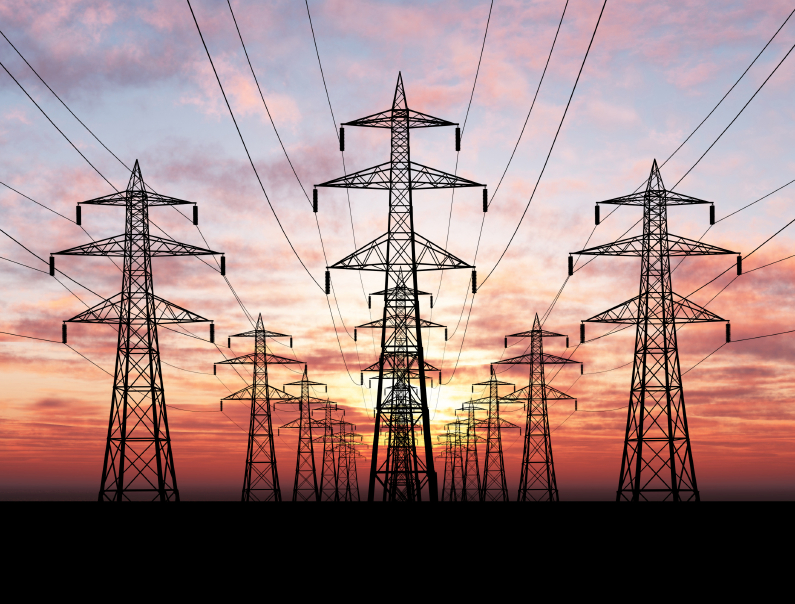SHTF essentials: 7 Alternate power sources for emergencies
05/04/2022 / By Zoey Sky

In a post-SHTF world, having a power source is going to be important for your survival, especially if the power grid goes down.
If you’re looking for a backup energy source for your homestead, consider getting a diesel generator or invest in a solar array. (h/t to ModernSurvivalOnline.com)
While electricity isn’t an issue in today’s modern world, when SHTF it will become a precious commodity.
Here are seven reliable sources of emergency power that you can use to charge your devices, power appliances and keep the lights burning in your homestead.
Battery/power bank
When you say battery bank or power bank, most preppers usually think of the small, compact units that can charge small devices like a smartphone, radios or GPS system.
However, larger, whole-house battery banks include deep cycle batteries that can store enough energy to power major appliances sparingly and even an entire home’s worth of low-drain fixtures for some time.
A properly set up battery bank can instantly switch on and maintain the supply of power to dependent electronics when primary power fails so you don’t lose data or risk any problem that can damage your equipment.
Both large and small battery banks require a bit of technical know-how and some maintenance to ensure reliable operation when SHTF.
Gasoline/diesel generator
A backup liquid-fueled generator that runs on gasoline or diesel is one of the most important appliances that you can get for your homestead.
Note that generators require fuel. Modern fuels, especially gasoline, don’t have long shelf lives so you need to treat them with additives and special storage requirements.
A generator also require regular maintenance, inspection and careful integration into your home’s electrical system.
Generators are a life-saver when the power goes out, but some of their disadvantages include being noisy and smelly. And if not being operated outdoors, they generate exhaust fumes that must be properly vented to avoid hazardous conditions.
Hydroelectric generator
Out of all the renewable energy sources, hydroelectric generation is one of the most consistent and productive.
Hydroelectric generation converts kinetic energy to electrical energy using a turbine. Because the force of moving water is often substantial, hydroelectric generation is often used in large-scale or energy-intensive applications.
Hydroelectric power works as long as your equipment is in good condition and it’s connected to a constantly moving body of water. If you’re worried about freezing conditions, get a backup like a generator for your hydroelectric power system.
Hydroelectric power may seem intimidating to the average prepper but it is actually available to consumers at a structural or whole house level and even on a portable level. If you want to integrate hydroelectric power into your homestead, make sure you are located near a sizable and swiftly moving river or waterfall.
On an individual level, portable hydroelectric turbines are compact, lightweight and ready for deployment in the nearest stream or river. A portable hydroelectric turbine can channel electricity back to your battery bank via a long, waterproof cord.
Manual crank generator
If you prefer an old-school power source, a manual crank generator or dynamo only relies on your strength and stamina. This type of generator can provide electricity on demand as long as you’re willing to manually crank them.
Depending on the size of the unit, these generators can be cranked by one hand, both hands, pedaled like a stationary exercise bike, or even driven around by two or more people using a contraption that looks like a giant hamster wheel.
The most common dynamo units are the compact, hand-cranked types often used to fuel personal electronics or recharge small power banks. Larger models like the stationary bike-type can produce enough power to charge mid-sized radio sets or multiple lights once you get them up to speed.
Despite their constant need for human input to function, manual crank generators are one of the few generators that can immediately produce electricity as long as you have the energy and willpower to crank them.
Solar array
Solar power systems are also popular among green energy enthusiasts. These systems include a solar module or the framed unit that contains the solar panels made up of multiple solar photovoltaic (PV) cells. These cells are usually blue or black.
Solar modules have solar panels inside and newer modules are slimmer and lighter. The modules connect to each other in a solar array with short cables, usually on rails attached to your roof.
Installers use one or more arrays, depending on the shape and size of the roof surfaces.
Solar charging arrays use one of the most reliable sources of energy to generate electricity suitable for use in a variety of settings: the sun, or the rays emitted by the sun.

When the sun’s rays strike the solar cell, they are converted into electricity. The electricity is then transmitted to devices that need them or stored in an onboard or separate battery for later use.
Solar power systems require a sizable investment, but sunlight is free. The only thing this system requires for success is a clear view of the open sky during daylight hours.
Modern solar systems are efficient and can quickly recharge all sorts of power-hungry devices. Consider setting up a solar power system if you live in an area with a high UV index, like the American Southwest. (Related: How to harness solar energy to power an off-grid air conditioner.)
Thermoelectric generator
Thermoelectric generation converts heat energy into electric energy. It is highly adaptable to a variety of circumstances and other operations.
Anything from wood to trash can be burned to harvest electricity from the flames.
In an industrial setting or a traditional power plant, thermoelectric generation can repurpose “waste” heat.
For individuals, this means burning twigs and other debris for boiling water or preparing dinner while also fueling an onboard battery pack or charging a device directly.
Wind turbine
Windmill power generators or wind turbines are another great option if you’re looking for a backup energy source. Windmill power generators work by harnessing the wind and turning kinetic energy into electrical energy.
While they are surprisingly productive, wind turbines are still an intermittent source of power. They also depend on a sustained, peak level of wind to function properly and produce usable electricity.
If the wind isn’t blowing, they aren’t generating power. Even if you live in traditionally windswept places there will be days where the wind is inadequate or absent entirely.
You can also opt for a portable version to reduce costs. When used on a smaller scale, wind turbines function somewhat better and more reliably because they can generate enough electricity to fuel a couple of devices.
You can survive when SHTF even without relying on the electrical grid if you make the necessary preparations. Invest in a backup energy source like diesel generators or a solar power system so you can charge devices as needed.
Watch the video below to know what it’s like to live off-grid with solar energy.
This video is from the SHTFPrepping101 channel on Brighteon.com.
More related stories:
Survival essentials: 5 Solar-powered items you need for your homestead.
Here are a few ideas for using solar energy around your home.
Solar homes: Utah apartment doubles as a “virtual power plant” that harnesses solar energy.
Sources include:
Submit a correction >>
Tagged Under:
disaster, electricity, energy supply, generators, homesteading, off grid, power, power grid, preparedness, prepper, prepping, self sufficiency, SHTF, solar energy, survival, survivalist, thermoelectric generator, wind turbine
This article may contain statements that reflect the opinion of the author
Get independent news alerts on natural cures, food lab tests, cannabis medicine, science, robotics, drones, privacy and more from NewsTarget.com
Get independent news alerts on natural cures, food lab tests, cannabis medicine, science, robotics, drones, privacy and more from NewsTarget.com
RECENT NEWS & ARTICLES
COPYRIGHT © 2017 · SURVIVAL NEWS





















